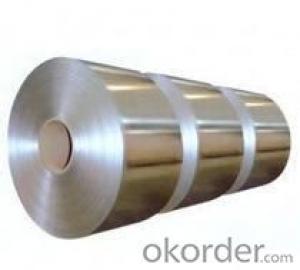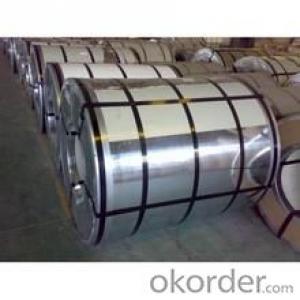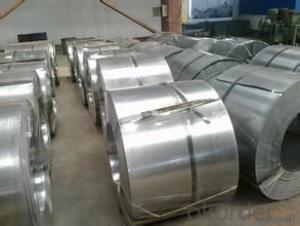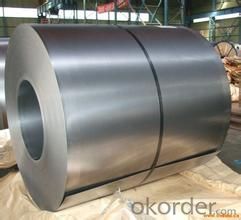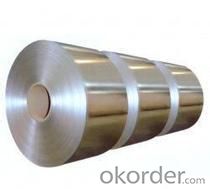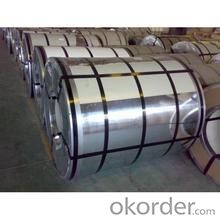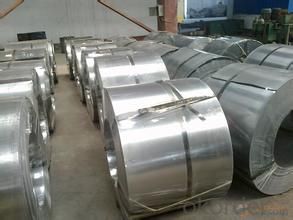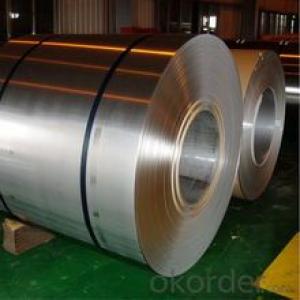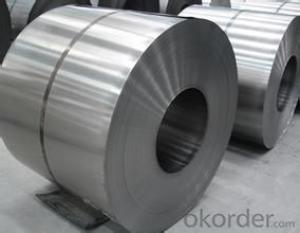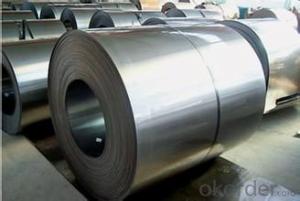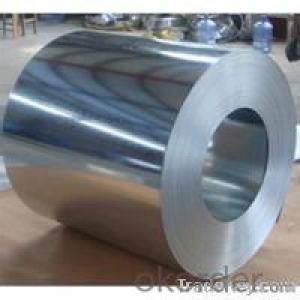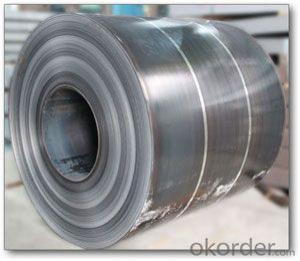cold rolled steel - SPCE in Good Quality
- Loading Port:
- Tianjin
- Payment Terms:
- TT OR LC
- Min Order Qty:
- 20 m.t.
- Supply Capability:
- 5000000 m.t./month
OKorder Service Pledge
OKorder Financial Service
You Might Also Like
Specification
The raw material of cold rolled steel coil/sheet is high quality hot rolled product, and after pickling, kinds of new technology and new process of global cold rolling production have been applied. Therefore the manufacturing, home appliance, automobile etc.
COLD ROLLED STEEL | |
THICKNESS | 0.3-0.5MM |
WIDTH | 600-1250MM |
SHEET LENGTH | 0-6000MM |
COIL ID | 508MM OR 610MM |
SURFACE TREATMENT | MATT FINISH/BRIGHT FINISH, OILED/DRY |
ANNEALING METHODS | BRIGHT ANNEAL/BLACK ANNEAL |
Advantage
1. High Quality SurfaceFinish
2. High Dimensional Precision
3. Excellent mechanicalproperty
Package & Delivery
Package details: Standardseaworthy packing for international delivery.
Delivery: According to theexact quantity of your order.
Quality of the goods could be guaranteed. The finished product has a variety of excellent capabilities, such as continuous rolling, degreasing, annealing, skin pass, slitting and cut to length line etc. Along with it many rocessing capability and smooth, flat surface. It’s widely used in outdoor and interior decoration, furnishing.
- Q: What are the different types of steel coil storage systems?
- There are several types of steel coil storage systems, including coil racks, coil cradles, coil saddles, and coil spools. Coil racks are vertical storage systems that allow coils to be stored upright. Coil cradles are horizontal storage systems that support the coil along its length. Coil saddles are similar to cradles but have additional supports to prevent the coil from rolling. Coil spools are specialized storage systems that allow for easy unwinding and rewinding of the coil.
- Q: How are steel coils used in the oil and gas industry?
- Steel coils are used in the oil and gas industry for various purposes such as pipelines, storage tanks, and drilling equipment. These coils are commonly used to manufacture seamless and welded pipes that are essential for transporting oil and gas from production sites to refineries and end-users. Additionally, steel coils are utilized in the construction of storage tanks that store oil and gas in large quantities. They are also an integral part of drilling equipment, including offshore platforms, where they provide structural support and withstand high-pressure environments.
- Q: Can steel coils be coated with zinc-aluminum alloy?
- Yes, steel coils can be coated with zinc-aluminum alloy.
- Q: i was giving this old knive. the knife part is stainless steel and has a couple rust spots but im not sure that the handle is (i think stainless) but it has this un smooth surface i dont think its rust because its not brown. would rubbing alcohol help clean it?
- Your answers are all good but I would mention that we have a set of Sabtier chef knifes that were expensive these look to be stainless but are not quite as I think that marine grade stainless does not make the best cutting edge and my guess is that your knife would contain a greater amount of carbon better cutting edge but not so stainless. As a carpenter that has to sharpen cutting tools I add that I have never had a chisel or plane blade that was made of stainless steel and the best edges I obtain are with vintage tools. Bar Keepers friend is great as is 00 grade wire wool but do not put your knife through the dishwasher as the cleaning tabs will pit the surface of your knife.
- Q: How do steel coils contribute to the agricultural sector?
- Steel coils contribute to the agricultural sector in various ways. Firstly, steel coils are used in the manufacturing of agricultural machinery and equipment such as tractors, harvesters, and irrigation systems. These machines are essential for efficient farming operations, helping farmers increase productivity and reduce labor costs. The strength and durability of steel coils ensure that the machinery can withstand the harsh conditions of the agricultural environment. Additionally, steel coils are used in the construction of storage facilities and warehouses for storing agricultural products. These structures need to be strong and resistant to external elements to protect the crops from damage. Steel coils provide the necessary strength and stability required for constructing these storage facilities, ensuring the safe storage of agricultural produce. Furthermore, steel coils are used in the fabrication of fencing and other agricultural infrastructure. Fencing is crucial in protecting crops from animals and preventing trespassing. Steel coils provide a robust material for fencing, ensuring the security and protection of agricultural lands. Moreover, steel coils are utilized in the production of irrigation pipes and systems. Efficient irrigation is vital for the growth and yield of crops, especially in areas with limited water resources. Steel coils are used to manufacture pipes that can withstand high pressure and are resistant to corrosion, ensuring the efficient distribution of water throughout the agricultural fields. In summary, steel coils play a significant role in the agricultural sector by providing the necessary materials for manufacturing machinery, constructing storage facilities, fencing, and irrigation systems. The strength, durability, and resistance to harsh conditions make steel coils an essential component in enhancing agricultural productivity, protecting crops, and ensuring efficient farming practices.
- Q: How are steel coils used in the production of metal panels?
- Steel coils are used in the production of metal panels as the primary raw material. These coils are fed into a roll forming machine, where they are uncoiled, flattened, and then shaped into the desired panel profiles. This process allows for efficient and continuous production of metal panels with consistent quality and strength.
- Q: What are the different types of steel coil cuts?
- There is a wide range of steel coil cuts utilized in various industries. These cuts are made during the steel manufacturing process to produce steel coils of different sizes and shapes, which can be employed for diverse applications. 1. Slit Coil: Among the most frequently employed steel coil cuts is the slit coil. This process involves cutting a large steel coil into narrower strips or slits. Slit coils are commonly utilized for applications that necessitate smaller widths, such as automotive parts, appliances, and construction materials. 2. Sheet Coil: Another type of steel coil cut is the sheet coil, which entails cutting a large coil into flat sheets. These sheets can be further processed to create different products, like roofing materials, cladding, or fabrication components. 3. Blanked Coil: The blanking process involves cutting a steel coil into custom-shaped blanks. These blanks can be used for various purposes, such as forming into different parts, stamping, or machining. Blanked coils find common usage in industries like automotive, aerospace, and manufacturing. 4. Precision Slit Coil: Precision slit coil is a specialized type of coil cut that involves cutting the steel coil with high precision and accuracy. This process ensures consistent width tolerances throughout the coil, making it suitable for applications that require precise dimensions, such as electrical components, precision tools, and automotive parts. 5. Oscillate Wound Coil: Oscillate wound coil is a unique type of steel coil cut that involves winding the steel strip in a zigzag pattern rather than a traditional flat coil. This method allows for tighter coil winding and maximizes the amount of steel on a coil. Oscillate wound coils are commonly used in industries that require high-volume production, such as stamping and roll forming. In conclusion, the diverse types of steel coil cuts cater to the specific needs of various industries, providing them with the flexibility to create products of different sizes, shapes, and dimensions.
- Q: I have a set of Stainless steel pots and pans. Everything is sticks to them. What must I do so things don't stick?
- a good de-greasing cleansing soap, a pad of metal wool, some warm water, and elbow grease will do the interest. Or once you've really one of those steamer gadgets, it truly is going to fantastically a lot melt off. And when you've them wiped clean up, somewhat Bon Ami and a scouring pad used each now and then will stay away from the upward thrust from returning. yet another good product is Twenty Mule team Borax oftentimes discovered close to the laundry products.
- Q: How much should someone sell a 6 ft stainless steel counter? How about one with a sink?
- Sheet stainless steel is about $2.00 to $2.75 per lb. in the US right now for a 2B stainless steel without any special finish. The cost of a sink or counter is going to vary widely. The labor to fabricate it is going to be a lot higher than the material cost so the price per pound is not going to tell you much. In California a custom 6' counter would be somewhere between $1,200 and $3,000. A standard size single compartment sink would be about half of that.
- Q: What is the process for uncoiling and recoiling steel coils?
- To ensure the safe and efficient handling of steel coils, several steps are involved in the process of uncoiling and recoiling. Firstly, the steel coils are transported to the desired location using cranes or forklifts and carefully unloaded from the transportation vehicle. They are then placed in a designated area. Before uncoiling, it is crucial to inspect the steel coils for any damage or defects. This step ensures that only quality coils are further processed. Once inspected, the steel coils are secured to prevent any movement during the uncoiling process. Clamps or straps are used to hold the coils firmly in place. Uncoiling involves gradually unwinding the steel coil, which can be done manually or using specialized machinery such as uncoilers or decoilers. The coil is typically fed through a series of rollers that guide the unwinding process. In some cases, the steel coil may need to be straightened before further processing. Straightening machines apply pressure to remove any bends or twists in the steel. If necessary, the uncoiled steel coil may be cut into smaller sections or sheets using shearing machines or other cutting tools. The dimensions and size of the cuts depend on the specific project requirements. Once the desired processing steps are completed, the steel coil can be recoiled. This involves rewinding the steel into a new coil shape, which can be done manually or using recoilers. Recoilers wind the steel evenly and tightly to maintain its integrity. After recoiling, the steel coils are typically packaged and stored for further transportation or use. They may be wrapped in protective materials such as plastic or metal sheets to prevent corrosion or damage. In conclusion, the process of uncoiling and recoiling steel coils requires careful handling, inspection, and the use of specialized machinery. By following these steps, steel coils can be efficiently processed and prepared for various applications in industries such as construction, automotive, and manufacturing.
Send your message to us
cold rolled steel - SPCE in Good Quality
- Loading Port:
- Tianjin
- Payment Terms:
- TT OR LC
- Min Order Qty:
- 20 m.t.
- Supply Capability:
- 5000000 m.t./month
OKorder Service Pledge
OKorder Financial Service
Similar products
Hot products
Hot Searches
Related keywords

